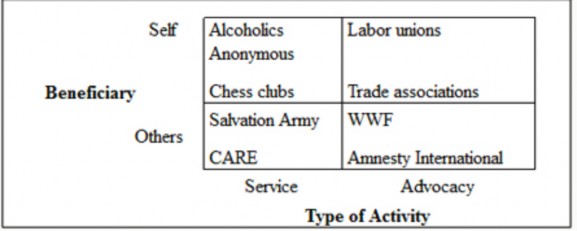3.2. Types of NGOs

In the 1980s, three different forms of NGO/voluntary movement emerged in India.
♤ Traditional Development NGOs: These NGOs directly engage with the public at large, go to the villages, tribal areas and carry out grass root development work related to education, health, sanitation, rural development etc. Ex: treatment centre for leprosy patients run by Baba Amte in central India.
♤ Activist NGOs: They see activism as their primary means of reaching their goals, because they do not believe they could get the authorities to move in any other way. Perhaps the best-known example of an NGO in this category is the Narmada Bachao Andolan (Save Narmada Campaign), an organization that opposed the construction of a series of large dams in a large river valley of central India.
♤ Research NGOs: They carry out intensive and in-depth analysis of topic/issue and lobby with the government, industry or other agencies to influence public policy. Ex: Centre for Science and Environment which engages in environment related works.
However, this classification is not strict and rigid. These NGOs keep taking multiple works that can be categorized in one category or other.
NGOs can also be classified on the basis of:
♤ Whom the NGO is designed to benefit? i.e. the beneficiary.
♤ What the NGO does? i.e. the activity.
Following is schematic representation of how a single NGO can have multiple activities and beneficiaries.

